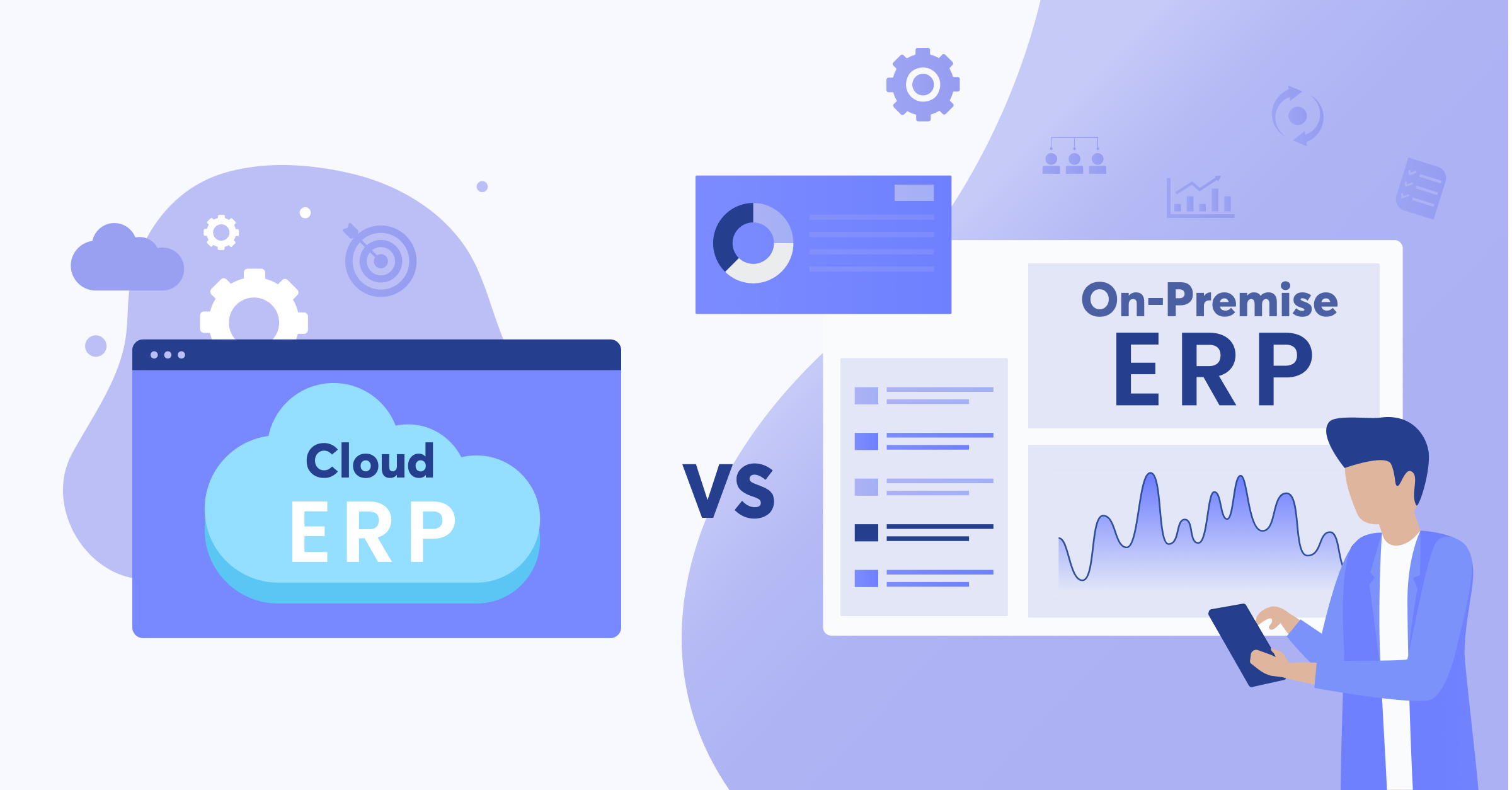As digital transformation accelerates, businesses face a critical decision when implementing Enterprise Resource Planning (ERP) systems: whether to deploy them on the cloud or on-premise. While Cloud ERP promises scalability and cost efficiency, many organizations still question whether it is as secure as traditional On-Premise ERP. This concern often stems from the idea that local data storage equals tighter control. However, modern cybersecurity standards and evolving cloud technologies are rapidly challenging that assumption.
Understanding the Core Difference
The distinction between Cloud and On-Premise ERP lies primarily in data hosting and management.
- On-Premise ERP systems are installed on local servers, physically located within an organization’s infrastructure. The IT team maintains full control over the hardware, software, and security configurations.
- Cloud ERP, on the other hand, operates on external data centers managed by third-party providers. These providers are responsible for infrastructure management, updates, and security protocols.
This difference has long been the foundation of the security debate. Many businesses assume that data stored offsite is more exposed to breaches, but this view often overlooks the level of investment and sophistication behind cloud security framework
The Security Evolution of Cloud ERP
Today’s leading Cloud ERP platforms are designed with security-first architecture. Providers employ multiple layers of protection, including end-to-end encryption, firewalls, intrusion detection systems, and continuous network monitoring. In fact, cloud vendors often invest billions annually to maintain security certifications such as ISO 27001, SOC 2, and GDPR compliance.
Another major advantage is the ability to perform automatic updates and patches. Cloud providers can deploy fixes across their entire infrastructure instantly, closing vulnerabilities before they can be exploited. By contrast, On-Premise systems typically require manual intervention, which can delay critical updates and increase exposure to risks.
In addition, cloud environments benefit from redundancy and disaster recovery mechanisms. Data is stored across multiple servers and regions, ensuring business continuity even in the event of a physical disaster or cyberattack.
On-Premise ERP: Security Through Control
Supporters of On-Premise ERP argue that keeping data within their own servers provides stronger control. In theory, this means businesses can define access levels, encryption methods, and security tools according to their internal policies. However, such control also means greater responsibility.
Maintaining an On-Premise ERP requires continuous investments in IT staff, infrastructure, firewalls, and backups. Without a dedicated security team, the system may suffer from outdated software, misconfigurations, or weak access controls. Ironically, these human and resource limitations can make On-Premise ERP more vulnerable than its cloud counterpart.
Furthermore, On-Premise solutions often struggle with compliance. As global data protection laws such as GDPR and CCPA evolve, ensuring continuous compliance can be complex and expensive for organizations managing their own infrastructure.
Balancing Security and Scalability
The discussion around ERP security should shift from “Where is the data stored?” to “How is the data protected?”. Both systems can be secure when managed properly. Cloud ERP offers built-in scalability, advanced security monitoring, and 24/7 oversight by experts. On the other hand, On-Premise ERP provides full customization and independence from external vendors.
In practice, hybrid models are emerging—where sensitive data is stored on-premise while operational data runs in the cloud. This approach offers a balanced trade-off between control and convenience.
Security Is a Shared Responsibility
Ultimately, Cloud ERP is not inherently less secure than On-Premise ERP—it’s simply secured differently. Cloud providers handle physical and infrastructure-level protections, while clients manage user access, identity verification, and internal policies. This shared responsibility model ensures that both parties contribute to overall security.
The choice between Cloud and On-Premise ERP should therefore depend not just on perceived safety, but on organizational capabilities, compliance requirements, and long-term scalability goals. In a world where cyber threats evolve faster than ever, relying solely on physical control is no longer enough. The future of ERP security lies in collaboration, automation, and continuous vigilance.

